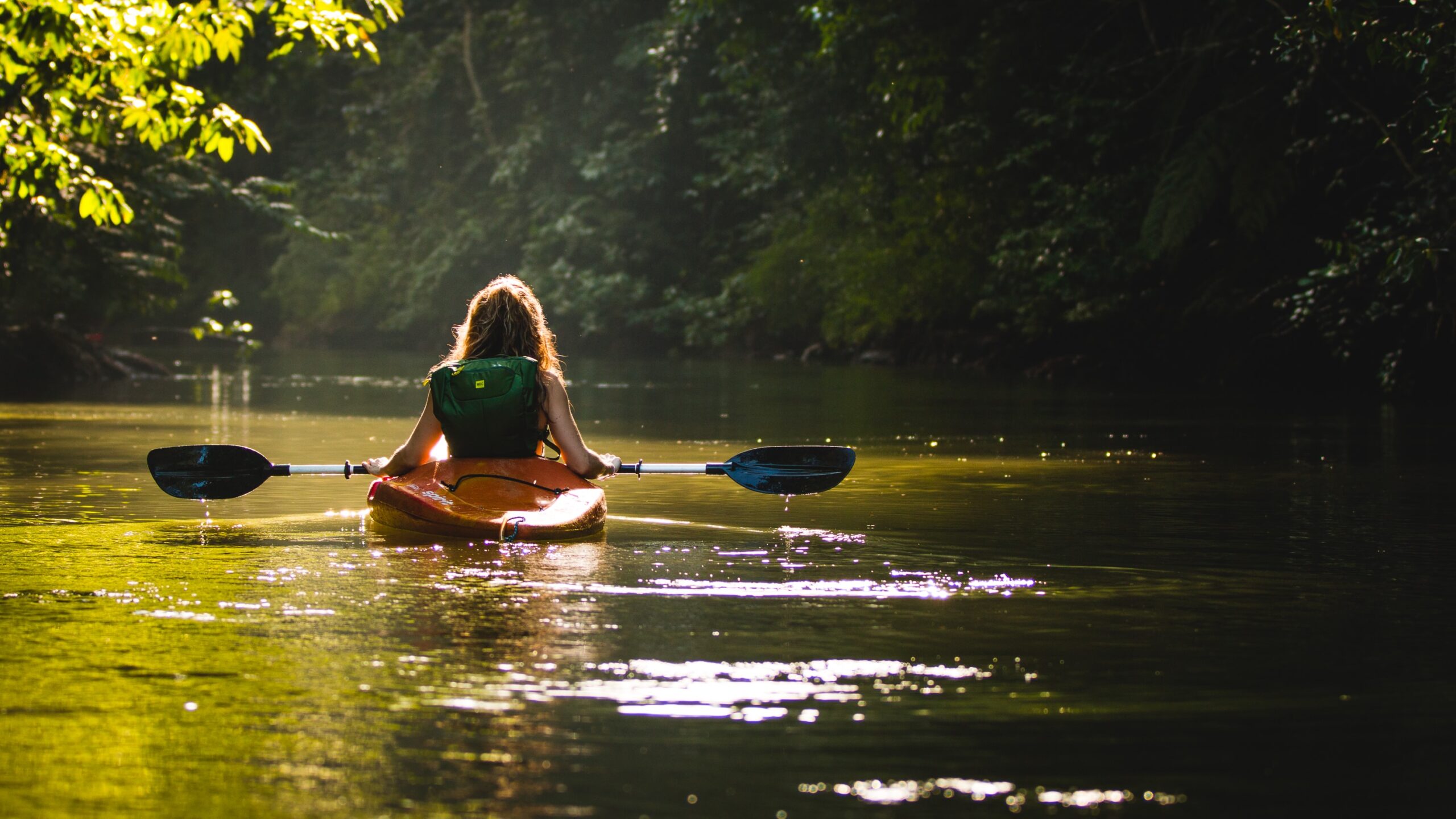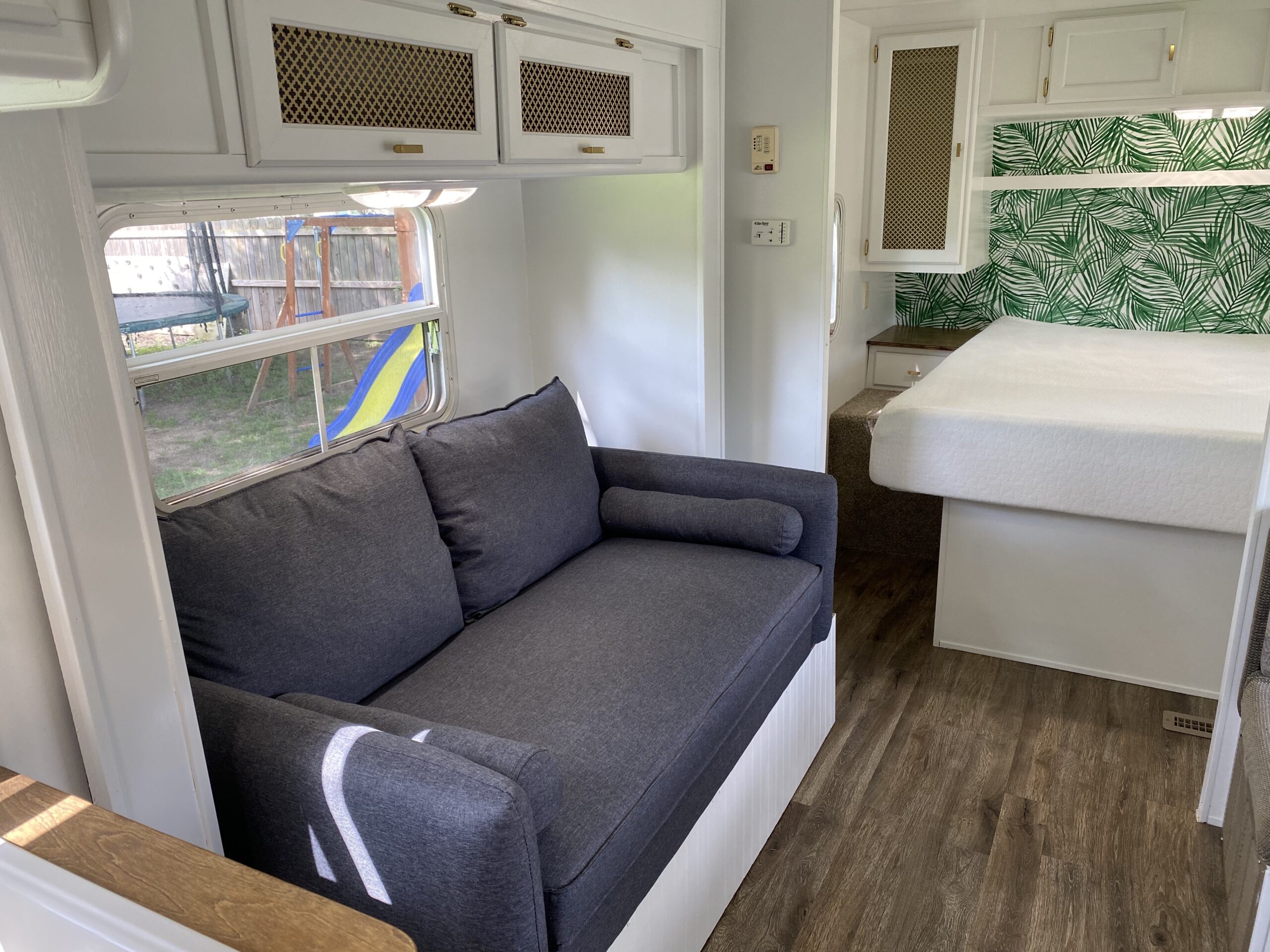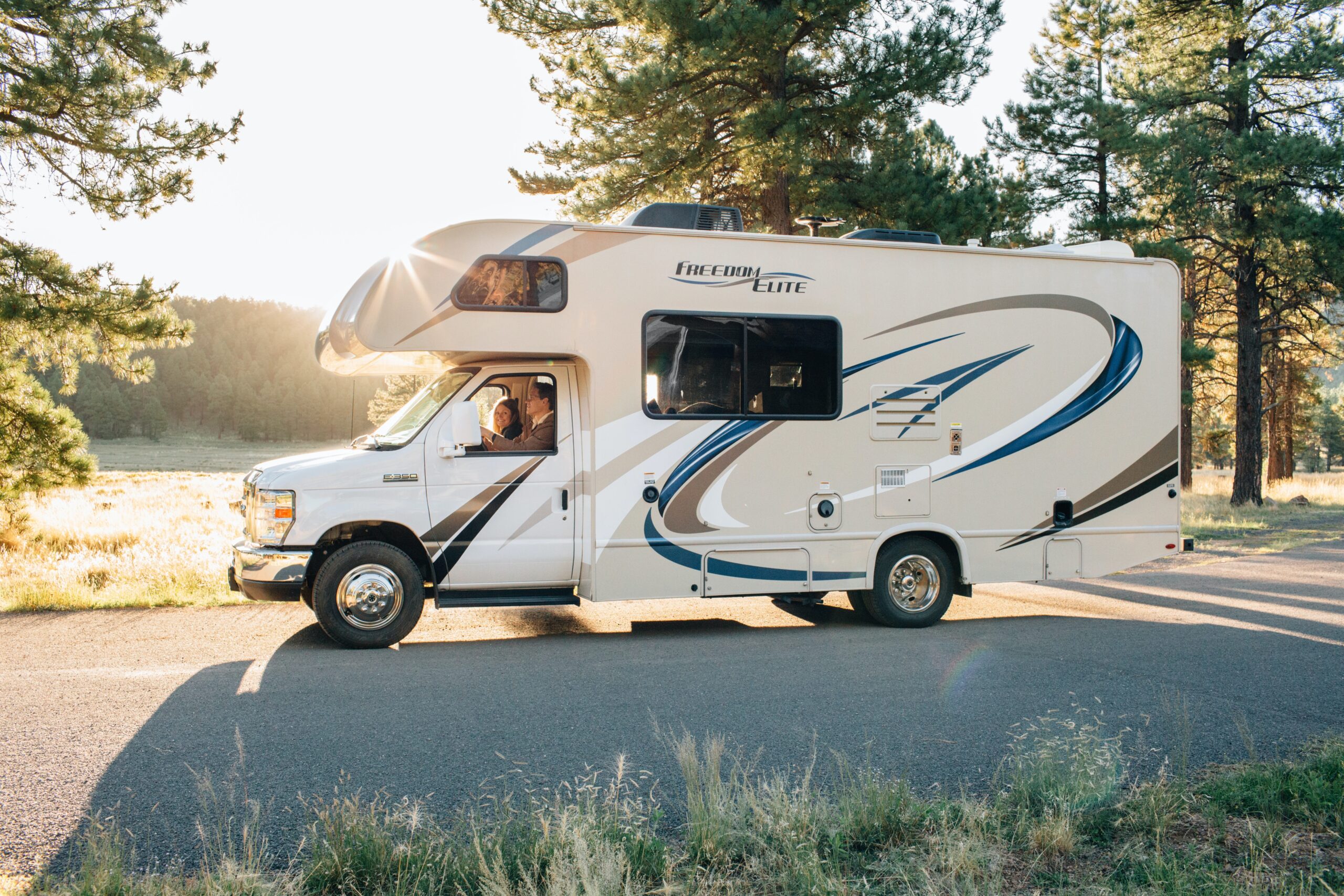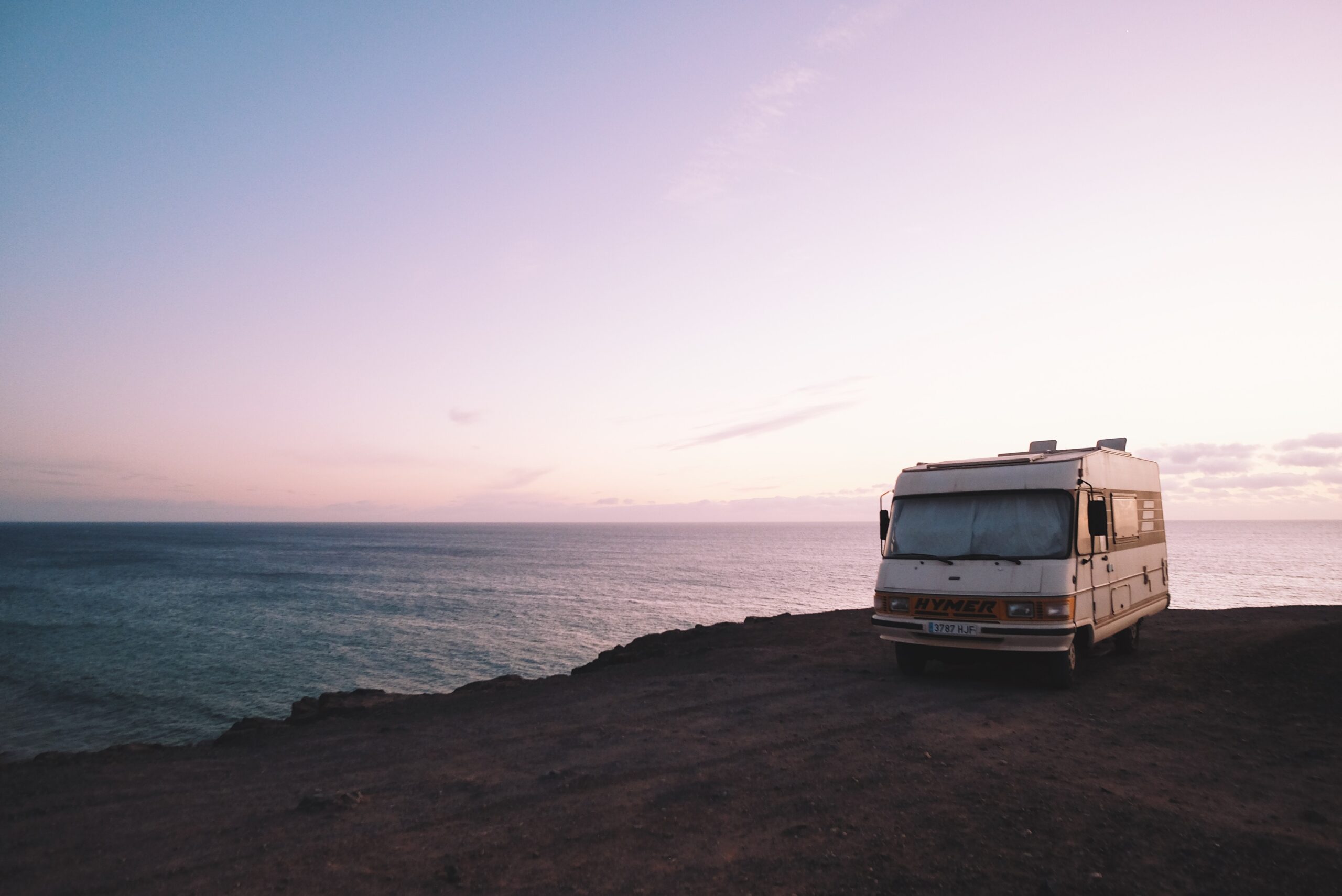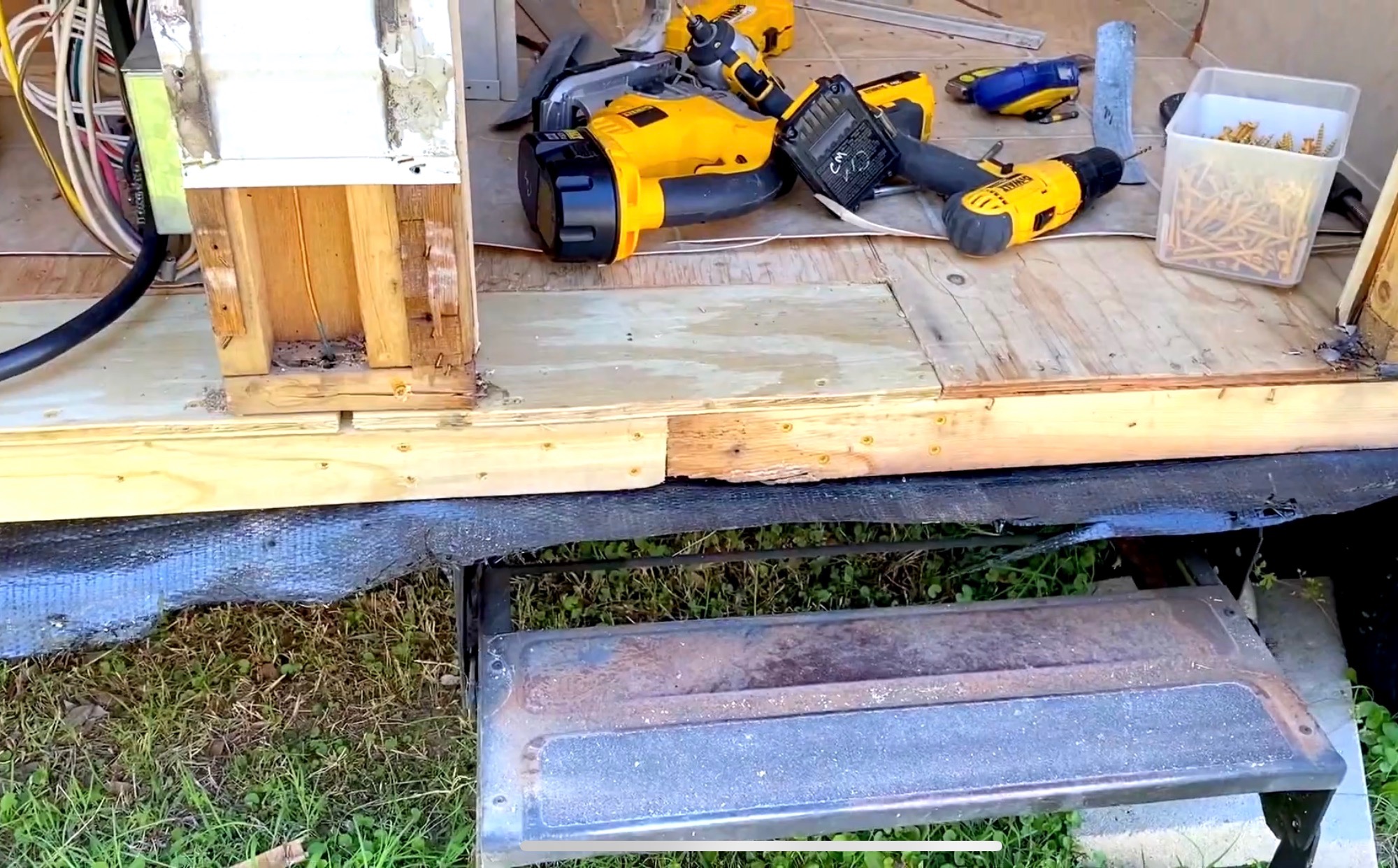If your next destination in your RV is somewhere with lake or river access, it stands to reason water-related activities may be an important aspect of your trip.
For some, using their own kayak is preferable, rather than renting one. This may be due to the fact that rentals are sometimes subpar in comparison to privately owned.
It could also be due to the fact that rentals are simply costly when you already own a kayak of your own.
Carrying your kayaks with you is absolutely possible, and there are many ways you can do so safely.
We are going to cover some of the easiest methods that will make sure to get your kayak to the camping area with you, with safety in mind.
RV Kayak Storage and Travel Solutions
Internal Storage
Depending on your camper design, you may have a full basement that has compartments that reach side to side. Many 5th wheel travel trailers are also equipped with these.
There is usually more than enough room to slide most standard-sized kayaks into these compartments, even go in a bit diagonally. This is an ideal way to take your kayak as it is under lock and key and no one even knows it is there. It won’t slide out and be damaged either.
Ladder Rack

One option is to invest in a ladder rack that can go in the bed of your tow vehicle. These are very affordable and easy to mount. For example, the MaxxHaul ladder rack is only $65, and will easily haul one kayak.
You can use straps to ratchet down your kayak and you can also use something like bicycle locks to secure it.
Keep in mind, these locks are not always effective to determined thieve. The higher you mount the kayak, the better. Don’t make it easy for anyone to reach it from standing next to your camper.
Roof Mounts
Roof mounts, like the Thule models, are also available for your RV or for the top of a tow vehicle. Roof racks are great, very secure when the kayak is loaded properly, and typically have room for more than one kayak at a time. This means you can bring several for the family.
Mounting on the roof of your RV is a disadvantage because it can interfere with clearance under overpasses. You don’t want to push clearance limits.
Take this into consideration when you plan on transporting anything on the roof of your RV. Make sure you invest in a quality rack and also ensure it is mounted properly to optimize stability.
Bumper or Hitch-Mount
Back bumper or hitch mount racks, like the Yakup, are one of the safest and most secure ways to mount your kayaks. In fact, they’re very versatile and allow you to also mount bikes and surfboards as well.
They are made to mount to your bumper, utilizing a receiver hitch if it has one. This means no drilling, which can sometimes be a deterrent to some people.
The bars can be locked into position and secured so that your expensive boards, kayaks, and bikes are safe from being damaged or stolen. These are like the Cadillac of mounting systems.
Ceiling Hoist

Using a ceiling hoist to mount a kayak inside your RV, is a last resort if you have no other way to get your kayak safely to your camping location.
The Kayak Ceiling Hoist can be used at home or inside of your RV if you’ve got the space to place it. At your campsite, you can easily stow your kayak underneath your rig, out of sight from most people.
This can be an option for many who don’t want to add mounts to the exterior of their RV and don’t have a tow vehicle to pull along with them.
This solution isn’t ideal and requires solid mounting to work effectively. There have been folks who have utilized this technique, but I don’t see it as optimal. However, I do use one of these to store kayaks in my garage at home.
Features You Want to Look For
Some of the things you should look for in a rack or mounting system are:
- Folds down out of the way when not in use
- Easy to mount
- Heavy metal tubing construction that won’t bend easily under loads
- Can be used on roof rack systems on low-roof RVs
- Easy load and unloading features
- Locking cargo mechanisms/anti-theft features
- Can carry multiple kayaks and/or other items
- One-person load and unload capability
- Stainless steel to last longer
These are all things you should pay attention to when you start shopping around. Some racks seem like a great deal and then you get home and find out that they aren’t so great because you can’t mount it yourself.
Or, you don’t have a way to load and unload the kayaks yourself without help. For single travelers, this is a big caveat. Have no fear, there are many options for you and in all price ranges, including some of the free options we mentioned above.
If you are older, you may also want something that likely doesn’t involve a lot of climbing. This could create a need to spend a little more money to get something simple to use and easy to install, even if someone else has to do the job for you. You can usually get an RV dealer to install these racks, and some automotive shops will do the jobs for you as well.
Mounting Your Rack – Pay Someone or DIY?
Be cautious of letting someone with no experience mount any permanent racks on your roof as it may nullify any warranties you have. It may also cause leaks if not done correctly. This could cost a lot of money in the long run.
These are all things to keep in mind. You should choose the rack that makes the most sense for your own personal situation, or haul your kayak inside of your RV, using the basement storage or hanging it inside during transit.
Conclusion

Being able to take your kayak with you ensures you can enjoy hours in nature, fishing or sightseeing. Birdwatching from kayaks is an excellent activity and kayaking can be a wonderful activity for a little exercise.
Wildlife photography is an activity that you can relax and enjoy. Kayaks offer an opportunity to see places that cannot be reached on foot, such as remote islands and camps in the Everglades, in the mountains of our Pacific Northwest, and all over the world.
When you can RV to remote areas and further explore with your kayak, you’re able to see places in the world others can’t. This is why finding the right way to transport your kayak with your RV is so important for those who love the tranquility of gliding through the water, silently.

